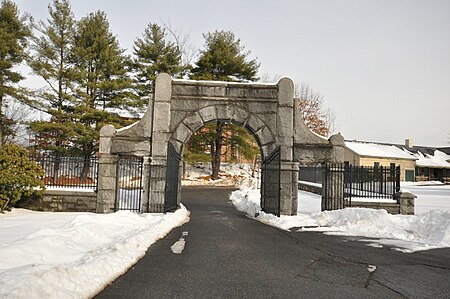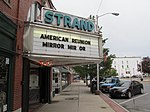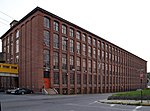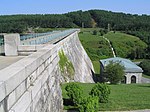Woodlawn Cemetery (Clinton, Massachusetts)
Buildings and structures in Clinton, MassachusettsCemeteries in Worcester County, MassachusettsCemeteries on the National Register of Historic Places in MassachusettsNational Register of Historic Places in Worcester County, MassachusettsRural cemeteries

Woodlawn Cemetery is a historic cemetery on Woodlawn Street in Clinton, Massachusetts. The oldest portion was laid out in 1853 by Joshua Thissell in the rural cemetery style popular at the time, and was one of the first municipal projects following the town's incorporation. It occupies a hilly parcel of over 33 acres (13 ha), about 1 mile (1.6 km) from the center of town. It was expanded twice, in the 1890s and in the 1920s. Prominent burials include Erastus and Horatio Bigelow, the town's early leading businessmen.The cemetery was listed on the National Register of Historic Places on July 23, 2013.
Excerpt from the Wikipedia article Woodlawn Cemetery (Clinton, Massachusetts) (License: CC BY-SA 3.0, Authors, Images).Woodlawn Cemetery (Clinton, Massachusetts)
Woodlawn Street,
Geographical coordinates (GPS) Address Nearby Places Show on map
Geographical coordinates (GPS)
| Latitude | Longitude |
|---|---|
| N 42.419444444444 ° | E -71.691388888889 ° |
Address
Woodlawn Street 2
01510
Massachusetts, United States
Open on Google Maps









